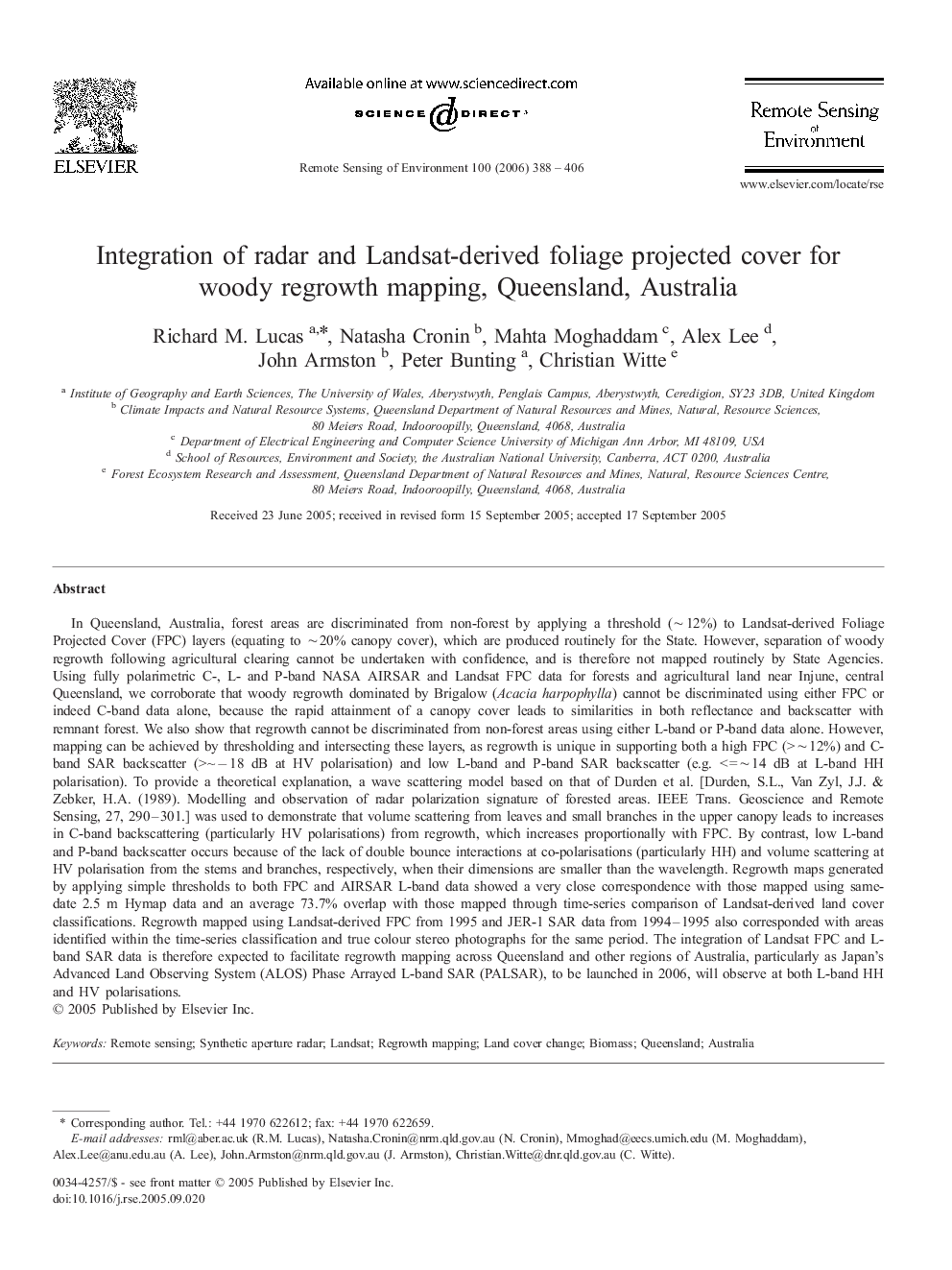| کد مقاله | کد نشریه | سال انتشار | مقاله انگلیسی | نسخه تمام متن |
|---|---|---|---|---|
| 4461199 | 1621375 | 2006 | 19 صفحه PDF | دانلود رایگان |

In Queensland, Australia, forest areas are discriminated from non-forest by applying a threshold (∼ 12%) to Landsat-derived Foliage Projected Cover (FPC) layers (equating to ∼ 20% canopy cover), which are produced routinely for the State. However, separation of woody regrowth following agricultural clearing cannot be undertaken with confidence, and is therefore not mapped routinely by State Agencies. Using fully polarimetric C-, L- and P-band NASA AIRSAR and Landsat FPC data for forests and agricultural land near Injune, central Queensland, we corroborate that woody regrowth dominated by Brigalow (Acacia harpophylla) cannot be discriminated using either FPC or indeed C-band data alone, because the rapid attainment of a canopy cover leads to similarities in both reflectance and backscatter with remnant forest. We also show that regrowth cannot be discriminated from non-forest areas using either L-band or P-band data alone. However, mapping can be achieved by thresholding and intersecting these layers, as regrowth is unique in supporting both a high FPC (> ∼ 12%) and C-band SAR backscatter (> ~ − 18 dB at HV polarisation) and low L-band and P-band SAR backscatter (e.g. < =∼ 14 dB at L-band HH polarisation). To provide a theoretical explanation, a wave scattering model based on that of Durden et al. [Durden, S.L., Van Zyl, J.J. & Zebker, H.A. (1989). Modelling and observation of radar polarization signature of forested areas. IEEE Trans. Geoscience and Remote Sensing, 27, 290–301.] was used to demonstrate that volume scattering from leaves and small branches in the upper canopy leads to increases in C-band backscattering (particularly HV polarisations) from regrowth, which increases proportionally with FPC. By contrast, low L-band and P-band backscatter occurs because of the lack of double bounce interactions at co-polarisations (particularly HH) and volume scattering at HV polarisation from the stems and branches, respectively, when their dimensions are smaller than the wavelength. Regrowth maps generated by applying simple thresholds to both FPC and AIRSAR L-band data showed a very close correspondence with those mapped using same-date 2.5 m Hymap data and an average 73.7% overlap with those mapped through time-series comparison of Landsat-derived land cover classifications. Regrowth mapped using Landsat-derived FPC from 1995 and JER-1 SAR data from 1994–1995 also corresponded with areas identified within the time-series classification and true colour stereo photographs for the same period. The integration of Landsat FPC and L-band SAR data is therefore expected to facilitate regrowth mapping across Queensland and other regions of Australia, particularly as Japan's Advanced Land Observing System (ALOS) Phase Arrayed L-band SAR (PALSAR), to be launched in 2006, will observe at both L-band HH and HV polarisations.
Journal: Remote Sensing of Environment - Volume 100, Issue 3, 15 February 2006, Pages 388–406